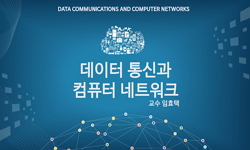Objectives: Falling in the elderly is considered a major cause of death. In recent years, ambient and wireless sensor platforms have been extensively used in developed countries for the detection of falls in the elderly. However, we believe extra effo...
http://chineseinput.net/에서 pinyin(병음)방식으로 중국어를 변환할 수 있습니다.
변환된 중국어를 복사하여 사용하시면 됩니다.
- 中文 을 입력하시려면 zhongwen을 입력하시고 space를누르시면됩니다.
- 北京 을 입력하시려면 beijing을 입력하시고 space를 누르시면 됩니다.


Fall Detection System for the Elderly Based on the Classification of Shimmer Sensor Prototype Data
한글로보기https://www.riss.kr/link?id=A104840412
-
저자
Moiz Ahmed (University of Karachi) ; Nadeem Mehmood (University of Karachi) ; Adnan Nadeem (Islamic University in Madinah) ; Amir Mehmood (Federal Urdu University of Arts Science and Technology) ; Kashif Rizwan (University of Karachi)

- 발행기관
- 학술지명
- 권호사항
-
발행연도
2017
-
작성언어
English
- 주제어
-
등재정보
KCI등재,SCOPUS,ESCI
-
자료형태
학술저널
- 발행기관 URL
-
수록면
147-158(12쪽)
-
KCI 피인용횟수
0
- DOI식별코드
- 제공처
-
0
상세조회 -
0
다운로드
부가정보
다국어 초록 (Multilingual Abstract)
Objectives: Falling in the elderly is considered a major cause of death. In recent years, ambient and wireless sensor platforms have been extensively used in developed countries for the detection of falls in the elderly. However, we believe extra efforts are required to address this issue in developing countries, such as Pakistan, where most deaths due to falls are not even reported.
Considering this, in this paper, we propose a fall detection system prototype that s based on the classification on real time shimmer sensor data. Methods: We first developed a data set, ‘SMotion’ of certain postures that could lead to falls in the elderly by using a body area network of Shimmer sensors and categorized the items in this data set into age and weight groups.
We developed a feature selection and classification system using three classifiers, namely, support vector machine (SVM), Knearest neighbor (KNN), and neural network (NN). Finally, a prototype was fabricated to generate alerts to caregivers, health experts, or emergency services in case of fall. Results: To evaluate the proposed system, SVM, KNN, and NN were used. The results of this study identified KNN as the most accurate classifier with maximum accuracy of 96% for age groups and 93% for weight groups. Conclusions: In this paper, a classification-based fall detection system is proposed. For this purpose, the SMotion data set was developed and categorized into two groups (age and weight groups). The proposed fall detection system for the elderly is implemented through a body area sensor network using third-generation sensors. The evaluation results demonstrate the reasonable performance of the proposed fall detection prototype system in the tested scenarios.
참고문헌 (Reference)
1 박현애, "노인건강증진을 위한 인터넷 기반 건강정보서비스 시스템 개발" 대한의료정보학회 8 (8): 1-19, 2002
2 Rakhman AZ, "u-FASt: ubiquitous fall detection and alert system for elderly people in smart home environment" 136-140, 2014
3 Sposaro F, "iFall : an Android application for fall monitoring and response" 2009 : 6119-6122, 2009
4 Mainwaring A, "Wireless sensor networks for habitat monitoring" 88-97, 2002
5 Haghi M, "Wearable devices in medical Internet of Things : scientific research and commercially available devices" 23 (23): 4-15, 2017
6 Brezmes T, "Surveillance with alert management system using conventional cell phones" 121-125, 2010
7 Tacconi C, "Smartphone-based applications for investigating falls and mobility" 258-261, 2011
8 Shimmer, "Simmer2 IMU unit" Simmer
9 Kansiz AO, "Selection of time-domain features for fall detection based on supervised learning" 2013
10 Rosendahl E, "Prediction of falls among older people in residential care facilities by the Downton index" 15 (15): 142-147, 2003
1 박현애, "노인건강증진을 위한 인터넷 기반 건강정보서비스 시스템 개발" 대한의료정보학회 8 (8): 1-19, 2002
2 Rakhman AZ, "u-FASt: ubiquitous fall detection and alert system for elderly people in smart home environment" 136-140, 2014
3 Sposaro F, "iFall : an Android application for fall monitoring and response" 2009 : 6119-6122, 2009
4 Mainwaring A, "Wireless sensor networks for habitat monitoring" 88-97, 2002
5 Haghi M, "Wearable devices in medical Internet of Things : scientific research and commercially available devices" 23 (23): 4-15, 2017
6 Brezmes T, "Surveillance with alert management system using conventional cell phones" 121-125, 2010
7 Tacconi C, "Smartphone-based applications for investigating falls and mobility" 258-261, 2011
8 Shimmer, "Simmer2 IMU unit" Simmer
9 Kansiz AO, "Selection of time-domain features for fall detection based on supervised learning" 2013
10 Rosendahl E, "Prediction of falls among older people in residential care facilities by the Downton index" 15 (15): 142-147, 2003
11 McClure R, "Population-based interventions for the prevention of fall-related injuries in older people" 1 : CD004441-, 2005
12 Dau HA, "Phone based fall detection by genetic programming" 256-257, 2014
13 "Neural network overview" MathWorks
14 Feldwieser F, "Multimodal sensor-based fall detection within the domestic environment of elderly people" 47 (47): 661-665, 2014
15 Dai J, "Mobile phonebased pervasive fall detection" 14 (14): 633-643, 2010
16 Suykens JA, "Least squares support vector machine classifiers" 9 (9): 293-300, 1999
17 Lee JK, "Inertial sensing-based pre-impact detection of falls involving near-fall scenarios" 23 (23): 258-266, 2015
18 Kwolek B, "Improving fall detection by the use of depth sensor and accelerometer" 168 : 637-645, 2015
19 Rubenstein LZ, "Falls in older people: epidemiology, risk factors and strategies for prevention" 35 (35): ii37-ii41, 2006
20 Sattin RW, "Falls among older persons : a public health perspective" 13 (13): 489-508, 1992
21 Mitty E, "Fall prevention in assisted living : assessment and strategies" 28 (28): 349-357, 2007
22 Neggazi M, "Efficient compressive sensing on the shimmer platform for fall detection" 2401-2404, 2014
23 Soto-Mendoza V, "Design of a predictive scheduling system to improve assisted living services for elders" 6 (6): 53-, 2015
24 Ojetola O, "Data set for fall events and daily activities from inertial sensors" 243-248, 2015
25 Nadeem A., "Data repository" Adnan Nadeem
26 Pannurat N, "Automatic fall monitoring : a review" 14 (14): 12900-12936, 2014
27 Yavuz G, "A smartphone based fall detector with online location support" 31-35, 2010
28 Yoshida S., "A global report on falls prevention epidemiology of falls" World Health Organization 2007
동일학술지(권/호) 다른 논문
-
Prevalence of Sharing Access Credentials in Electronic Medical Records
- 대한의료정보학회
- Ayal Hassidim
- 2017
- KCI등재,SCOPUS,ESCI
-
Citation Analysis for Biomedical and Health Sciences Journals Published in Korea
- 대한의료정보학회
- 오주연
- 2017
- KCI등재,SCOPUS,ESCI
-
Blogs as Channels for Disseminating Health Technology Innovations
- 대한의료정보학회
- Ashish Joshi
- 2017
- KCI등재,SCOPUS,ESCI
-
- 대한의료정보학회
- Ahmed Belderrar
- 2017
- KCI등재,SCOPUS,ESCI
분석정보
인용정보 인용지수 설명보기
학술지 이력
| 연월일 | 이력구분 | 이력상세 | 등재구분 |
|---|---|---|---|
| 2023 | 평가예정 | 해외DB학술지평가 신청대상 (해외등재 학술지 평가) | |
| 2020-01-01 | 평가 | 등재학술지 유지 (해외등재 학술지 평가) |  |
| 2011-01-01 | 평가 | 등재 1차 FAIL (등재유지) |  |
| 2010-04-05 | 학술지명변경 | 한글명 : 대한의료정보학회지 -> Healthcare Informatics Research외국어명 : Journal of Korean Society of Medical Informatics -> Healthcare Informatics Research |  |
| 2009-01-01 | 평가 | 등재학술지 유지 (등재유지) |  |
| 2006-01-01 | 평가 | 등재학술지 선정 (등재후보2차) |  |
| 2005-01-01 | 평가 | 등재후보 1차 PASS (등재후보1차) |  |
| 2003-01-01 | 평가 | 등재후보학술지 선정 (신규평가) |  |
학술지 인용정보
| 기준연도 | WOS-KCI 통합IF(2년) | KCIF(2년) | KCIF(3년) |
|---|---|---|---|
| 2016 | 0.24 | 0.24 | 0.21 |
| KCIF(4년) | KCIF(5년) | 중심성지수(3년) | 즉시성지수 |
| 0.18 | 0.15 | 0.434 | 0.09 |




 KCI
KCI






